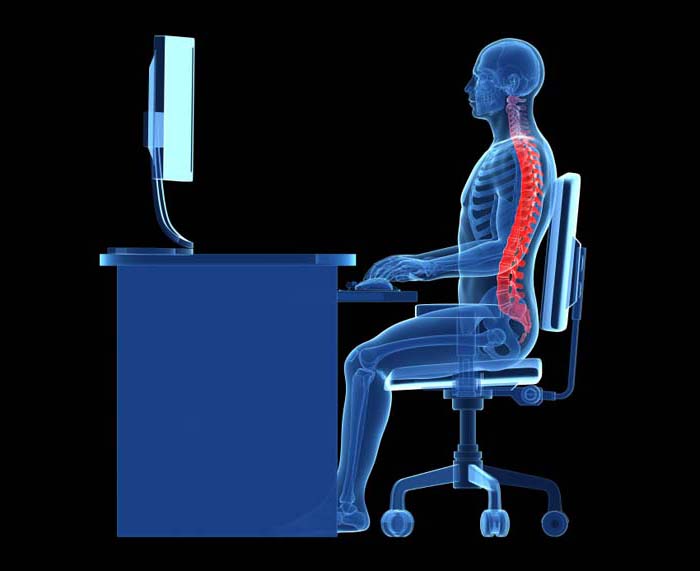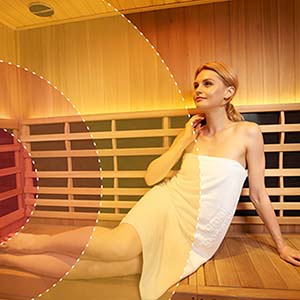Back Pain
Back Pain
What you need to know about Back Pain
Back pain is a major reason for people missing work and seeking medical assistance. It can be both unpleasant and debilitating.
It can be caused by an accident, physical exertion, or certain medical disorders. Back pain can strike people of all ages for a variety of causes. Lower back discomfort is more likely to develop as people age, due to factors such as your previous profession and degenerative disc disease.
The bony lumbar spine, discs between the vertebrae, ligaments around the spine and discs, spinal cord and nerves, lower back muscles, abdominal and pelvic internal organs, and the skin around the lumbar area are all possible causes of lower back pain.
Aortic disorders, chest tumours, and spine inflammation can all cause pain in the upper back.
Chronic or acute pain?
Back pain is divided into two categories:
- Acute pain appears out of nowhere and can linger for up to six weeks.
- Chronic or long-term pain develops over time, lasts longer than three months, and causes issues.
It might be difficult for a doctor to tell if a patient has acute or chronic back pain if they experience both periodic bouts of more extreme pain and fairly constant mild back pain.
Symptoms of Back Pain
An ache or soreness in the back, and sometimes down to the buttocks and legs, is the most common sign of back pain.
Depending on the nerves involved, some back problems might produce discomfort in other places of the body.
The discomfort usually goes away without treatment, but if any of the following persons have it, they should consult a doctor:
- Weight loss
- Fever
- Inflammation or swelling on the back
- Persistent back pain, where lying down or resting does not help
- Discomfort in the legs
- Soreness that extends to the knees
- A recent back injury, blow, or trauma
- Bladder incontinence
- Urination problems
- Faecal incontinence, or the inability to control bowel motions
- Numbness in the genital area
- Tingling around the anus
- Tingling in the buttocks
Diagnosis
After asking about symptoms and performing a physical examination, a doctor can typically diagnose back discomfort.
If you have the following symptoms, you may need an imaging scan and other tests:
- An injury appears to be the cause of back pain.
- There could be an underlying issue that needs to be addressed.
- The discomfort lasts for a long time.
The status of the soft tissues in the back can be determined via an X-ray, MRI, or CT scan.
- X-rays can reveal bone alignment and detect arthritis or broken bones, but they may miss injury to the muscles, spinal cord, nerves, or discs.
- MRI or CT scan can discover Herniated discs, as well as abnormalities with tissue, tendons, nerves, ligaments, blood vessels, muscles, and bones.
- Bone scans can detect bone cancers or osteoporosis-related compression fractures. A tracer or radioactive material is inserted into a vein. The tracer collects in the bones and, with the help of a special camera, helps the doctor spot bone abnormalities.
- Electromyography or EMG records the electrical impulses produced by nerves in reaction to muscles. A herniated disc or spinal stenosis can cause nerve compression, which can be confirmed with this test.
If an infection is suspected, the doctor may also prescribe a blood test.
Other types of diagnosis
- A chiropractor uses touch (palpation) and a visual examination to make a diagnosis. Chiropractic is noted for its straightforward approach, with a significant emphasis on spinal joint adjustments. Imaging scans, as well as any blood and urine tests, may be requested by a chiropractor. Find a chiropractor here
- An osteopath can diagnose via touch, palpation and visual inspection. Slow and rhythmic stretching, known as mobilisation, pressure or indirect treatments, and joint and muscle manipulation are all part of osteopathy.
- A physical therapist specialises in detecting abnormalities in the body’s joints and soft tissues.
Causes
The human back is made up of muscles, ligaments, tendons, discs, and bones, all of which work together to support the body and allow us to move around.
Disks, which are cartilage-like pads, cushion the spine’s segments.
Back discomfort can be caused by issues with any of these components. The source of back discomfort in some situations is unknown.
Strain, physical issues, and poor posture, among other things, can cause damage.
Strain
Back discomfort is frequently caused by strain, tension, or injury. Back discomfort is frequently caused by:
- Muscle or ligament strain
- Spasm of a muscle
- Muscular tenseness
- Faulty discs
- Falls, fractures, or injuries
The following activities can cause strains or spasms:
- Incorrectly lifting something
- Lifting an excessively heavy object
- Making an unpleasant and sudden movement
Structural problems
Back pain can be caused by a variety of structural issues.
- Ruptured discs: Disks cushion each vertebra in the spine. When a disc ruptures, it puts greater pressure on a nerve, causing back discomfort.
- Bulging discs: can put greater strain on a nerve in the same manner as ruptured discs do.
- Sciatica: caused by a bulging or herniated disc pressing on a nerve, a severe and shooting pain that runs down the buttock and down the back of the leg.
- Osteoarthritis: is a type of arthritis that affects the hips, lower back, and other joints. The area around the spinal cord can narrow in some circumstances. Spinal stenosis is the medical term for this condition.
- Abnormal curvature of the spine: Back discomfort can occur if the spine curves in an unexpected way. Scoliosis is a condition in which the spine curves to one side.
- Osteoporosis: Compression fractures are more frequent as bones, notably the vertebrae of the spine, become brittle and porous.
- Kidney problems: Back discomfort might be caused by kidney stones or infection.
Movement and posture
When using computers, adopting a slumped seating position might lead to increased back and shoulder difficulties over time.
Back discomfort can also be caused by certain daily activities or bad posture.
Here are several examples:
- Twisting
- Sneeze or coughing
- Muscular tenseness
- Over-stretching
- Bending awkwardly or for extended periods of time
- Something is being pushed, pulled, lifted, or carried.
- Long periods of standing or sitting
- When driving or using a computer, straining the neck forward is common.
- Lengthy periods of driving without stopping, even while not crouched
- Sleeping on a mattress that does not provide adequate body support and does not maintain the spine straight
Other causes
Back discomfort can be caused by a variety of medical disorders, including:
- Cauda equina syndrome: a grouping of spinal nerve roots that emerge from the lower end of the spinal cord. Numbness in the buttocks, genitalia, and thighs, as well as a dull discomfort in the lower back and upper buttocks, are all symptoms. Bowel and bladder function are occasionally affected.
- Spinal cancer: A tumour in the spine can press against a nerve, causing back pain.
- Infection of the spine: An infection of the spine can cause a fever and a sore, warm spot on the back.
- Other infections: Back discomfort can also be caused by pelvic inflammatory disease, bladder infections, or kidney infections.
- Sleep disorders: Back discomfort is more common in people with sleep disturbances than in the general population.
- Shingles: Back pain can be caused by an infection that affects the nerves. Which nerves are affected determines this.
When to call a doctor
You should consult a doctor, If you feel numbness or tingling, or if you have back discomfort:
- Rest does not improve symptoms
- Following an injury or a fall
- Accompanied with leg numbness
- With weakness
- Accompanied with fever
- Weight loss that is unexplainable
Treatment of back pain
Treatment
Back pain normally goes away with rest and home treatments, but medical treatment is sometimes required.
Treatments at home
Nonsteroidal anti-inflammatory medications (NSAIDs), such as ibuprofen, are commonly used over-the-counter (OTC) pain relievers. A hot compress or an ice pack applied to the sore area may also help.
Resting from heavy activities can help, but moving about can aid with stiffness, discomfort, and muscle weakness.
Medical treatment
If home remedies fail to ease back pain, a doctor may prescribe one or both of the following medications or physical therapy.
Medication: Back discomfort that does not respond to over-the-counter pain relievers may require a prescription NSAID. Narcotics such as codeine or hydrocodone may be administered for brief periods of time. The doctor must keep a watchful eye on these. Muscle relaxants may be utilised in some instances.
Antidepressants such as amitriptyline may be prescribed, but research on their effectiveness is ongoing, and the evidence is mixed.
Physical therapy: Applying heat, cold, ultrasound, and electrical stimulation to the back muscles and soft tissues, as well as other muscle-release techniques, may assist relieve pain.
The physical therapist may introduce some back and abdominal flexibility and strength exercises as the discomfort improves. Posture-improvement techniques may also be beneficial.
To avoid back pain recurrence, the patient will be encouraged to perform the exercises on a regular basis, even after the pain has subsided.
Cortisone injections: These may be injected into the epidural space, which surrounds the spinal cord if other methods have failed. Cortisone is a type of anti-inflammatory medication. It aids in the reduction of inflammation surrounding nerve roots. Injections can also be utilised to numb locations that are regarded to be the source of the discomfort.
Botox: Botox (botulism toxin) is supposed to relieve pain by numbing sprained muscles in spasms, according to several early research. These injections last approximately 3 to 4 months.
Traction: Back stretches are done with pulleys and weights. A herniated disc may move back into place as a result of this. It can also help with pain relief, but only when traction is used.
Cognitive-behavioural therapy (CBT): CBT encourages new ways of thinking, which can assist manage persistent back pain. Techniques for relaxation and maintaining a happy mindset may be included. Patients who receive CBT are more active and exercise, according to studies, which lowers the chance of back pain recurrence.
Complementary therapies
Complementary therapies can be utilised in conjunction with or instead of traditional treatments.
Chiropractic, osteopathy, shiatsu, and acupuncture may treat back pain while also promoting relaxation in the patient.
- An osteopath treats the skeleton and muscles.
- A chiropractor heals disorders in the joints, muscles, and bones. The spine is the main focus.
- Shiatsu, also known as finger pressure therapy, is a style of massage that involves applying pressure along the body’s energy lines. The shiatsu therapist uses their fingers, thumbs, and elbows to provide pressure.
- Acupuncture has its origins in China. Fine needles and specific points are inserted into the body. Acupuncture can help the body release endorphins, which are natural painkillers, while also stimulating nerve and muscle tissue.
- Yoga consists of a series of poses, movements, and breathing exercises. Some may aid in the strengthening of back muscles and the improvement of posture. It is critical to ensure that exercises do not aggravate back pain.
Complementary medicines have yielded mixed results in research. While some people have reaped tremendous benefits, others have not. When contemplating alternative therapies, it is critical to work with a skilled and registered therapist.
Transcutaneous electrical nerve stimulation (TENS) for patients with chronic back pain is a popular treatment option. Through electrodes implanted on the skin, the TENS machine sends tiny electric pulses into the body.
TENS, according to experts, stimulates the production of endorphins in the body and may stop pain signals from reaching the brain. TENS research has yielded mixed results. Some said there were no benefits, while others said it would be beneficial to some people.
A doctor or other health expert should be consulted before using a TENS machine.
It should be avoided by anyone who is:
- Is pregnant
- Has an epilepsy history
- Possesses a pacemaker
- Has a history of cardiovascular disease
TENS is “safe, non-invasive, affordable, and patient-friendly,” and it appears to relieve pain; nevertheless, additional research is needed to demonstrate its effectiveness in increasing activity levels.
Surgery
Back surgery is extremely uncommon. If a patient has a herniated disc, surgery may be a possibility, particularly if the pain and nerve compression is severe enough to cause muscle weakness.
Surgical techniques include the following:
- Fusion: A bone graft is implanted between two vertebrae to fuse them together. Metal plates, screws, or cages are used to splint the vertebrae together. There is a substantially higher chance that arthritis will develop in the adjacent vertebrae.
- Artificial disc: The cushion between two vertebrae is replaced by an artificial disc.
- Discectomy: If a disc is irritating or pressing against a nerve, a part of it may be removed.
- Partially removing a vertebra: If a vertebra is squeezing the spinal cord or nerves, a tiny piece of it may be removed.
Injecting cells into the nucleus pulposus to rebuild spine discs: Duke University scientists developed new biomaterials that can provide a booster shot of reparative cells to the nucleus pulposus, thereby removing discomfort caused by degenerative disc disease.
Risk Factors
The following factors have been related to an increased incidence of low back pain:
- Professional activities
- Pregnancy
- Sedentary behaviour
- Insufficient physical fitness
- Advancing years
- Obesity and being overweight
- Smoking
- Intense physical activity or work, particularly when performed incorrectly
- Genetic influences
- Medical conditions, such as Cancer or Arthritis
Lower back discomfort is also more common in women than in men, probably because of hormonal differences. Back discomfort has also been connected to stress, anxiety, and mood disorders.
Prevention
Addressing some of the risk factors is the most effective way to reduce the likelihood of having back pain.
Regular exercise aids in the development of strength and the management of body weight. Low-impact aerobic activities that are guided can help improve heart health without straining or jerking the back. Consult a health care Expert before beginning any workout regimen.
People can lower their risk of back pain by doing one of two types of exercises:
- Core-strengthening exercises strengthen the abdominal and back muscles, which help to protect the back.
- Core flexibility, which includes the spine, hips, and upper legs, is improved through flexibility training.
Diet: Make sure you get enough calcium and vitamin D in your diet to keep your bones healthy. A balanced diet also aids in weight management.
Smoking: When compared to non-smokers of the same age, height, and weight, smokers have a much higher rate of back discomfort.
Bodyweight: Back discomfort is influenced by how much weight people bear and where it is carried. The likelihood of back discomfort differs significantly between obese and normal-weight people. People who bear their weight in their abdomen rather than their buttocks and hips are likewise more vulnerable.
Posture when standing: Make sure your pelvis is in a neutral position. Stand tall with your head forward, back straight, and weight properly distributed on both feet. Maintain a straight line between your legs and your spine.

Posture when sitting: A decent working seat should have a swivel base, good back support, and armrests. Keep your knees and hips level while sitting, and your feet flat on the floor or on a footstool. You should be able to sit up straight with assistance in your lower back. Make sure your elbows are at right angles and your forearms are horizontal if you’re using a keyboard.
Lifting: Lift with your legs rather than your back while carrying heavy objects.
Maintain balance by maintaining your back as straight as possible and keeping your feet apart with one leg slightly front. Bend solely at the knees, keep your weight close to your body, and straighten your legs with as little back movement as possible.
Although it is unavoidable to bend your back at first, avoid stooping and make sure to tense your abdominal muscles so that your pelvis is pulled in. Most importantly, do not straighten your legs before lifting; otherwise, you will be doing the majority of the effort with your back.
Do not lift and twist at the same time: If something is especially heavy, see if you can lift it with the help of another person. Keep your gaze straight forward, not up or down, while rising, so that the back of your neck forms a continuous straight line from your spine.
Moving things: Pushing things across the floor with your leg strength is healthier for your back than pulling them.
Shoes: The back is less strained with flat shoes.
Driving: It is critical to provide enough back support. Make sure the wing mirrors are in the right place so you don’t have to twist. Your feet should be directly in front of the pedals. Take frequent pauses if you’re on a long journey. Get out of your car and go for a walk.
Bed: You should sleep on a mattress that supports the weight of your shoulders and buttocks while keeping your spine upright. Use a cushion, but not one that pulls your neck into an awkward position.





